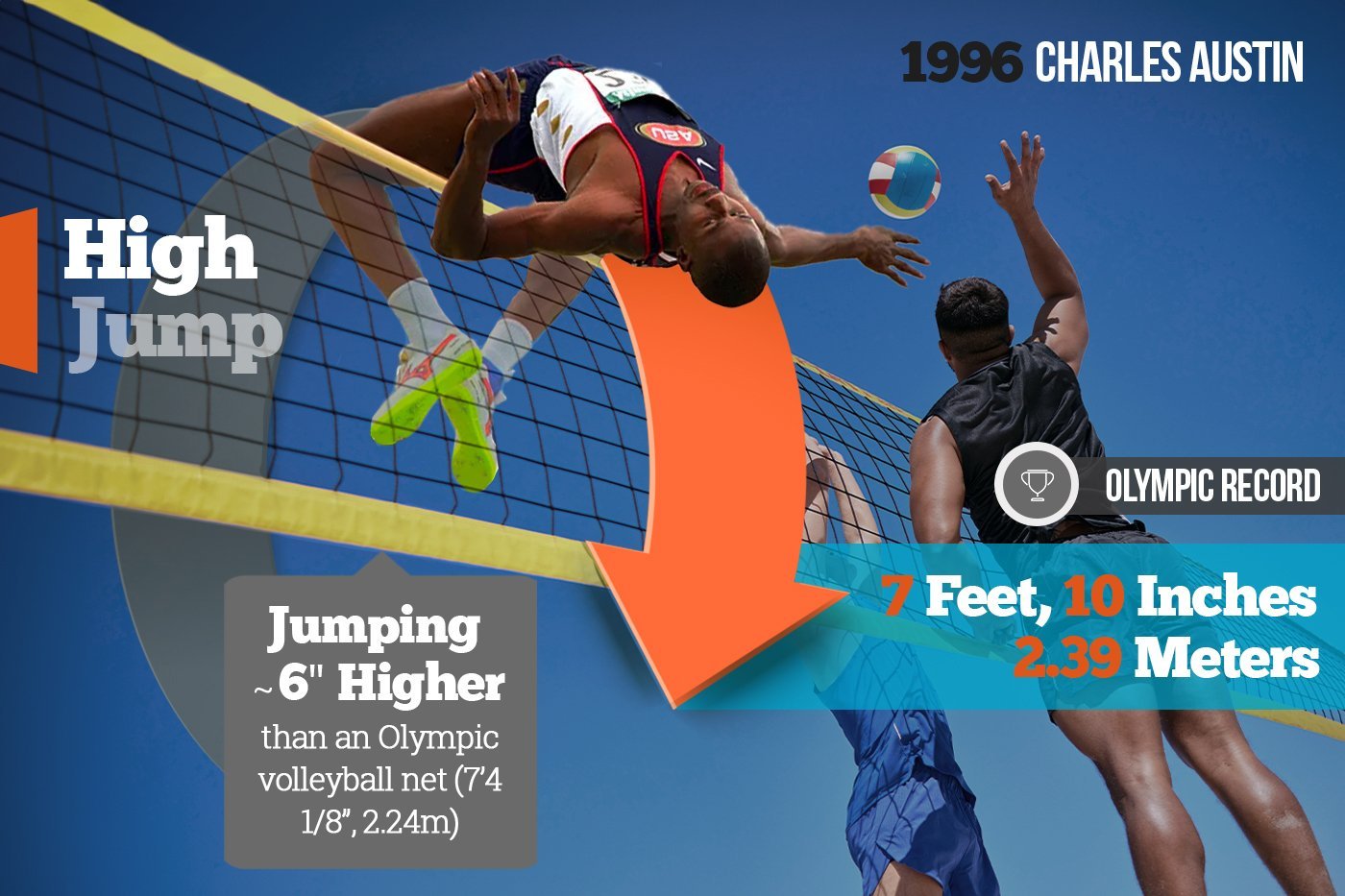
The single biggest mistake coaches and athletes make in the long jump is overloading the penultimate step.
In this article we’re going to simplify the penultimate step.
You'll learn what it is and why it can cause so many problems. You'll also learn how to identify and fix these issues using proper long jump technique.
Some of the technical issues created by an improper penultimate step include:
- Reaching at the board.
- Suboptimal/incorrect takeoff angles (going too vertical).
- A dramatic speed reduction at takeoff.
- Increased injury risk.
These breakdowns in long jump technique lead to shorter jumps. The good news is that all of them can be avoided.
The primary goal in the long jump is to convert speed into distance.
The speed comes from the work performed on the runway. Assuming the athlete has proper sprinting form.
The conversion to distance comes largely from the technique used on the last 3 steps. It sounds simple and in some respects it is.
Many of the biggest distance killers in long jump technique are the result of athletes and coaches trying to over emphasize the last part of the jump.
More times than not the problem is with the penultimate step.
What is the penultimate step in the long jump?
The penultimate step is the second to last step before the jump.
Many coaches and athletes believe that the goal of the penultimate step is to lower the hips and center of mass prior to the plant and takeoff.
This is misinformed way to think about the penultimate step and here is why:
Ideally the hips should be lowered on the 3rd to last step. This negates the need for any change in mass on the 2nd to last step.
If a jumper uses the penultimate step to drop the hips, the result is almost always shorter distances.
The reason is because the center of mass drops too much and the step to the board will be too long.
This causes a sudden decrease in speed and a takeoff angle that is too vertical.
In the video below coach Ryan Baily of CSU describes what the penultimate step is in a simple and easy to understand way.
The Last 3 Steps to the Board
The key points from the video above:
When an athlete sprints down the runway they are continually pushing and applying force to the ground to reach maximum velocity. In order to jump, the hips need to be lowered at some point.
Lowering of the hips is achieved by a softer step. The softer step causes the next step to be longer. Which results in the step after that to be shorter.
3rd to last step hips drop - next stride to 2nd to last step is longer - last stride to the board is shorter.
This is the ideal stride pattern for the last 3 steps in the long jump.
It will be very easy to understand why in the following sections. We've also included a fantastic video that clearly illustrates the last 3 steps.
The Most Effective Long Jump Course Online.
Explore CourseCommon Problems With the Penultimate Step
Using the penultimate step to drop the hips leads to several issues at takeoff. We’ll focus on the 3 big ones
- Reaching at the board
- Incorrect Take off angle
- Speed reduction
All of these issues are interrelated and can have multiplying effects. Let’s use speed at takeoff as an example.
Reaching at the board reduces speed through one mechanism and dropping the hips further reduces speed through another.
Watch the video below to see this in action.
Reaching
As mentioned above, a soft step drops the hips and center of mass. It also results in a longer next step.
So if the step to the board is too long what happens? Reaching. And that’s not good.
“Reaching” is when the leg lands in front of the body and center of mass. During sprinting (reaching) or over-striding slows you down.
This happens because the foot acts as a brake as it applies force against the direction you are running. It also puts the body in a position where it can’t fully use the power of leg muscles.
When it comes to long jump technique, reaching at the board causes a similar reduction in speed. Reaching will also put the body out of position and cause a reduction in power.
Beyond hurting your distance, reaching actually hurts and can cause serious injury.
Look at the clip below and see how much stress is being placed on the leg by reaching.
Takeoff Angle
The goal of the long jump is stated right in the name. You want maximum distance, not height.
A great quote from coach Baily about the takeoff angle:
“The long jump has to project in that correct angle to go far, it doesn’t matter and you don’t get extra points for going high. It’s fun to go up in the air, and in a great jump you feel both. You feel up and you feel out. But the problem is, a lot of times they’re just getting the up and then they are going to come right back down.”
So how does this apply to the penultimate step?
By loading up on that second to last step the hips drop and there is a long last step. This puts the athlete in a position where they’re leaning back and “loaded” ready to spring up.
At this point it’s a matter of physics and biomechanics.
The energy transfer of the speed that was generated on the runway is going to be reduced and much more vertical with the hips loaded. It's also very difficult to have a good drive knee from this position.
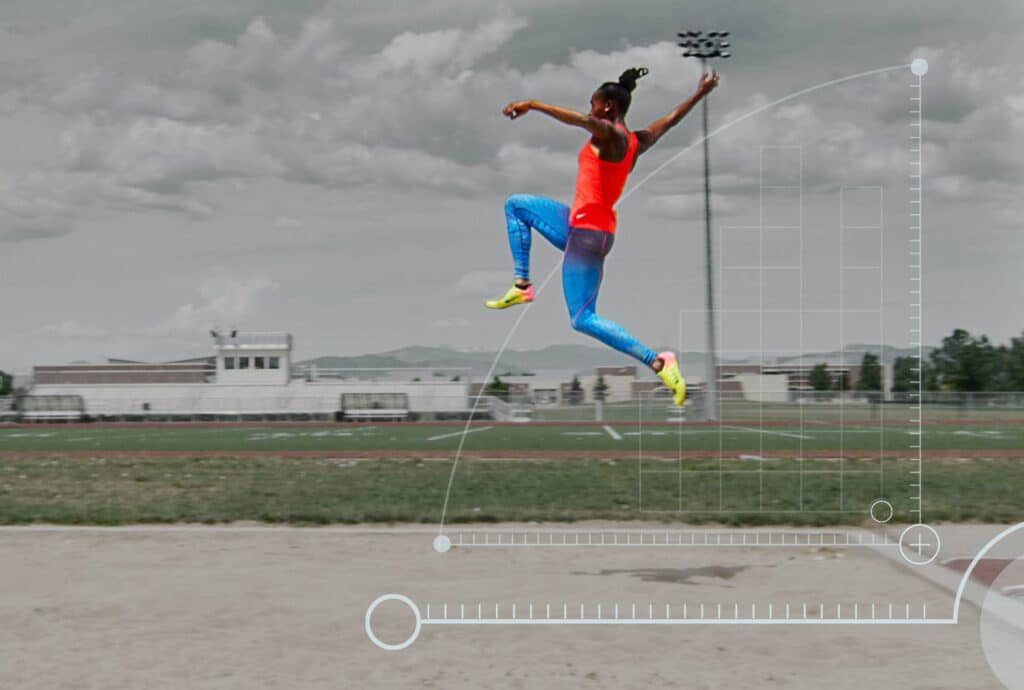
Speed Reduction
Ideally you want to loose the least amount of speed possible prior to take off. The way to achieve this is twofold:
First, reduce the amount that the hips drop as much as possible.
Second, having the plant leg land underneath the center of mass by taking advantage of the natural short, quick step that occurs after the longer step.
Wait a second, how are we getting the short, quick step?
See how it’s starting to come together?
In the beginning of the article we talked about how dropping the hips with a softer step. This causes the next step/stride to be longer. But we haven’t been talking about the step after that which is the shorter quicker step.
Why?
Because if you use the penultimate step to drop the hips you don’t get the short step. This is because you are already at the board and in the air.
Confused? Don’t worry, the video below and next section will bring everything together.
This video breaks down the last 3 steps of the long jump from different angles. It clearly demonstrates the advantages of having a soft 3rd to last step. It also provides a good visual of what the penultimate step should look like.
Bringing It All Together
You don't want to drop the hips on the penultimate step. Instead, move the softer step back to the 3rd to last step. See what this does?
3rd to last step is softer, the hips drop causing a longer step to the...
2nd to last step. The center of mass is already lower from the 3rd step so there is no change. No need to really do anything with the penultimate step. Now we get a quick short step to...
The board. Because the step to the board is now a short, quick one vs a long one, we are in an ideal position to jump far.
- No reaching. The shorter, quicker step means the athlete will land underneath their center of mass at the board. They will be able to fully utilize the power of the hips and legs.
- Proper takeoff angle. The upper body will be in the correct position and slightly forward at takeoff. The hips are in the proper position to allow the drive leg to achieve the optimal motion.
- Speed maintenance. Because the hips aren’t dropping on the step prior to takeoff speed is maintained as the body naturally cycles through the air.
If the last 3 steps are performed properly there isn't a need to focus on the penultimate step.
Watch this short excerpt from Jumping Smarter, Jumping Farther. Janay DeLoach Soukup (Olympic bronze medalist in the long jump) talks about why emphasizing the penultimate step is not how to jump farther.
Recap
The best way to think about the penultimate step in the long jump is: don’t.
Thinking you have to do something extra with the second to last step introduces major issues into your long jumping technique.
The way to develop the last 3 steps of the approach is through various drills that hardcode proper technique.
When performed correctly, drills like the 'box-ground-box' drill develop and train the muscles and nervous system.
After a while drills ingrain the technique so it becomes automatic. When you are on the runway in a meet you don't want to be have to think your way through the jump.
The notion of “power jumpers” that don’t run as fast, but really load up at the board is a misnomer. You have to have speed to jump far and you need to do everything you can not to disrupt that speed prior to the jump.
Instead of having a softer step and lowering the hips on the 2nd to last step, move it back to the 3rd to last step. This sets up the approach so the last step to the board is short and quick.
This will maximize speed, put the body in the correct position and the angle of the jump will be optimized to achieve the furthest distance.
If you would like to learn more elite long jump technique, check out Janay DeLoach Soukup's masterclass, Jumping Smarter, Jumping Farther.

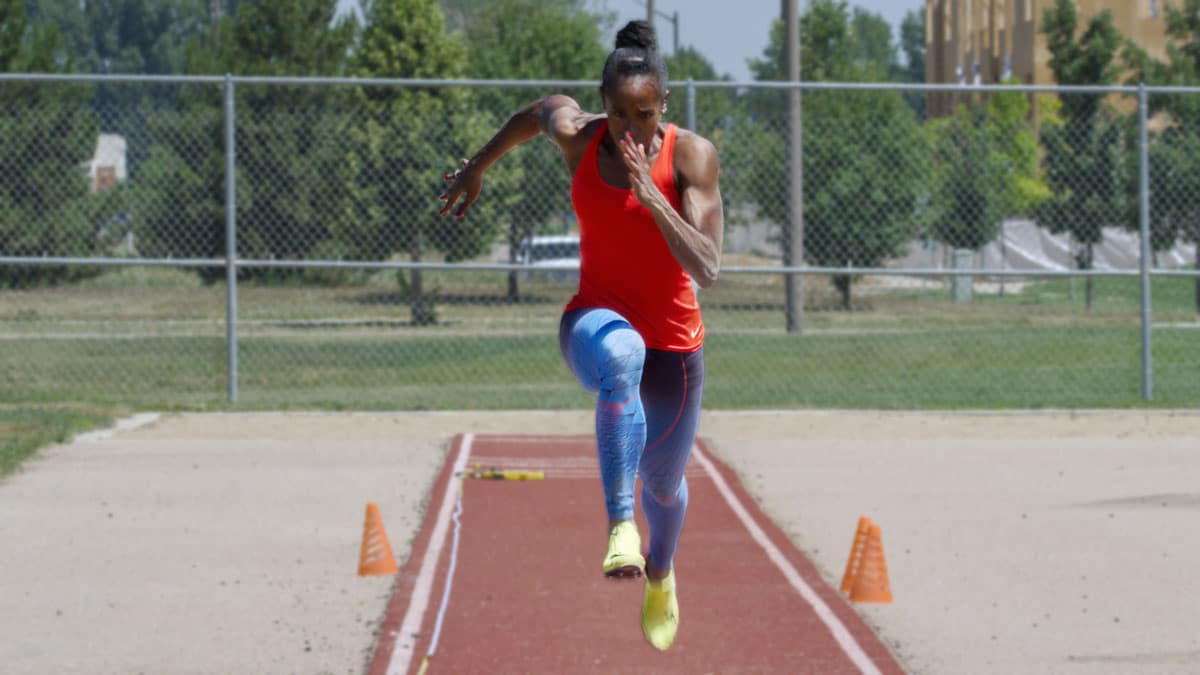
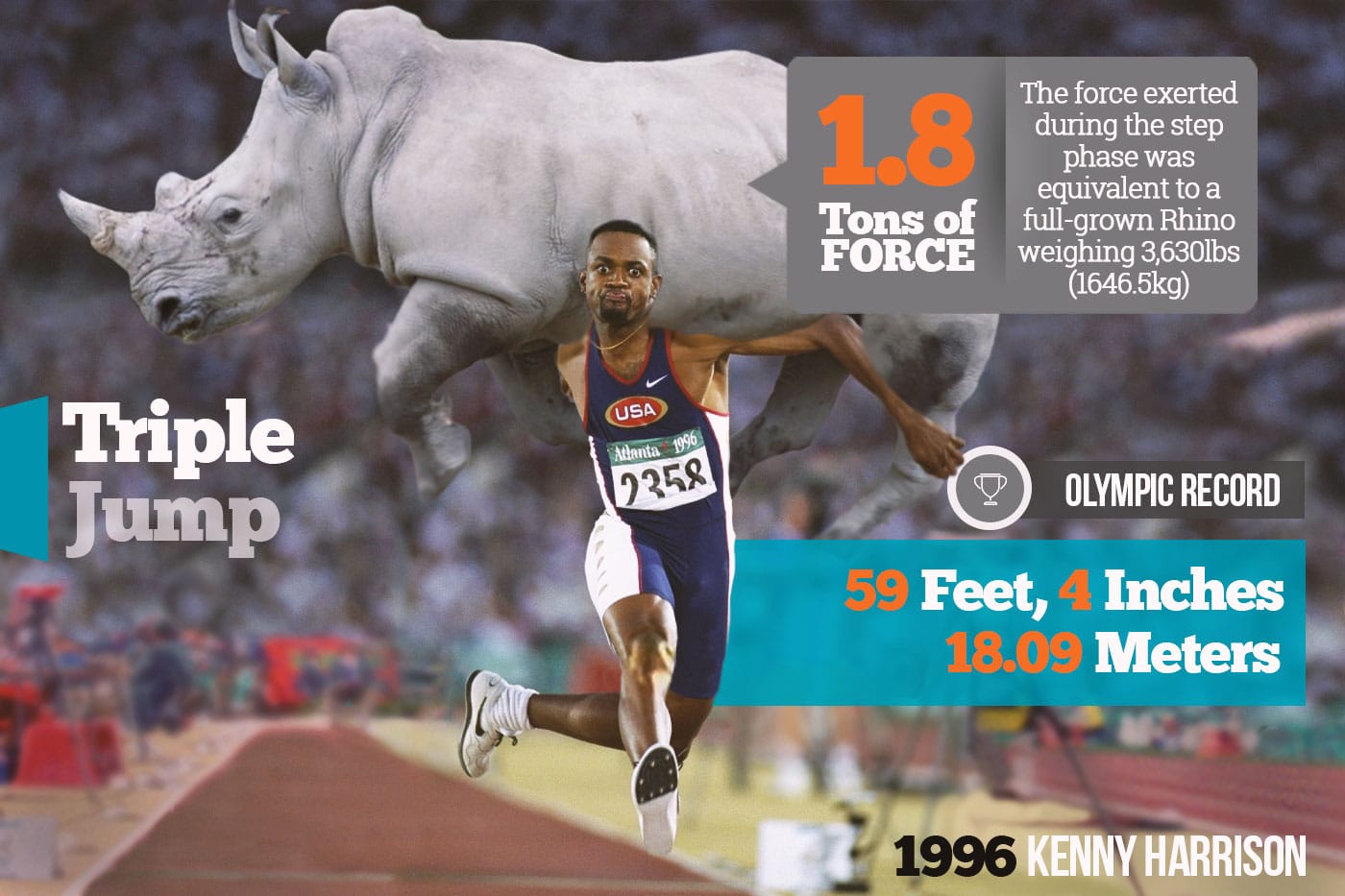

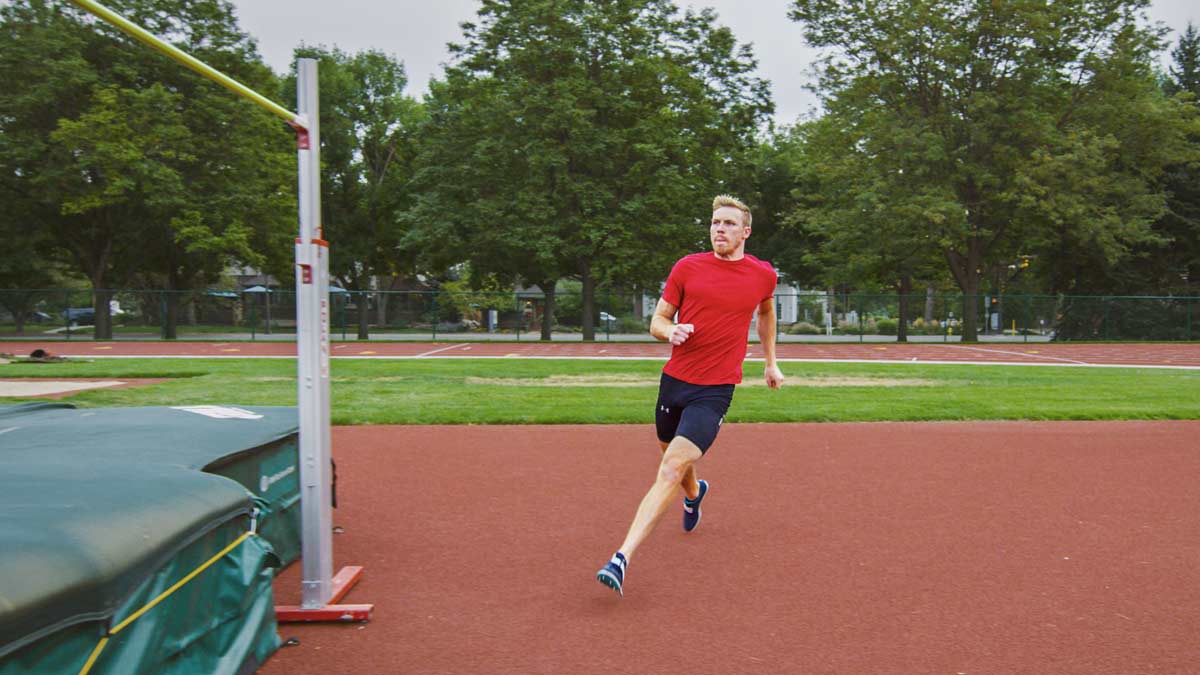
What is it meant by having a softer step, are you actively telling yourself to contact the ground lightly on third step?
Yes, in a way. That 3rd to last step is slightly different from a technical standpoint in that your hips are dropping and ground contact is somewhat altered. However you don't want it to be a major change and like the penultimate step, you don't want to overemphasize it if that makes sense.